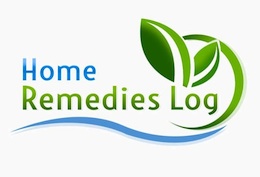
The way homeopathy is generally described is that of a type of alternative medicine in which practitioners will treat the symptoms and disease of their patients by making use of highly diluted preparations.

Homeopathy’s first fundamental was stated in seventeen ninety six by Samuel Hahnemann and it’s known under the name of the “Law of similars”. When a homeopath will prepare his cures for certain afflictions of symptoms, he will use serial dilution with succussion (a process in which the homeopath will use an elastic body in order to shake the solution by forceful striking). The medicine’s effectiveness can easily be improved if each dilution will be followed by succussion on and it’s actually a process called “potentization”. Oftentimes dilution will continue until the point until none of the original substance will remain.
Introduction:
It’s not only symptoms that homeopaths examine, but they will also examine the patient’s psychological and physical state. After that, they will use repertories or homeopathic reference books and in the end, based on the symptoms, a remedy will be chosen.
In homeopathy, the word “remedy” is used in order to point to a substance that was particularly prepared for a certain procedure and thus intended for patient use. It’s actually different from the way this word is generally accepted and that is a therapy or medicine that will relieve pains or cure diseases. Regardless of the homeopathic remedy, it must not contain a pharmacologically active molecule, as such an effect would be in contradiction with the core principals of homeopathy.
In modern practice, many homeopaths suggested that water has a memory, thus allowing the homeopathic preparations to be effective without any of the original diluted substance. Used at the high dilutions that were recommended by Hahnemann, the oral homeopathic remedies are safe, yet when they are used at lower dilutions, that’s not guaranteed. In some cases homeopathy received critics because it puts patients at risks, as they advice against using antibiotics, anti-malarial drugs and vaccinations (conventional medicine). Yet depending on each country, the prevalence and regulation of homeopathic remedies varies a lot.
The Vitalist Philosophy
Homeopathy is a type of philosophy known as “vitalist” stating that sickness and diseases are produced by dissonances in the human’s life force and these disturbances will, as a result, manifest themselves in certain symptoms. Homeopathy tries to maintain the life-force and ensure that it has the ability to adapt and also react at external and internal causes, something that is known as the “law of susceptibility” in the world of homeopaths.
This law implies that hypothetical disease can be attracted by a negative mind state (miasms) which will eventually enter the body and be responsible for creating the symptoms of diseases. Yet this is a notion that Hahnemann rejected and strengthened the fact that it was always part of the “living whole”. The reason to which he introduced homeopathy is because at the time, the western medicine was brutal and did more damage than actually curing it.
Hahnemann’s Law of Similars
Hahnemann realized in his experiments with cinchona bark (used to treat malaria), that what he felt was actually similar to malaria’s symptoms. Thus, he decided that medicines (treatments) have to be produced in such a way that they will produce symptoms similar to those of the disease, in individuals who are healthy. Later on, based on his research en experiments he developed the law of similar as a main healing principle.
His belief was that if someone would use drugs in order to induce symptoms, the life force would eventually be stimulated by the artificial symptoms which in turn would cure the initial disease. When the dosing would be finished, he also believed that the artificial disturbance would go away. So he basically thought that using a substance in large doses which has the main effect of producing similar symptoms to those of the disease the patient is suffering form, he will eventually manage to cure the disease.
Hahnemann’s Miasms and Diseases
The concept of “miasms” was introduced by Hahnemann in eighteen twenty eight. Homeopaths define miasms as an imputed strange morbid affliction of the individual’s life force and he associated each of them with certain diseases, stating that miasms are the main cause of many diseases. He believed that people who would be exposed to miasms will suffer from local symptoms, like venereal or skin diseases, yet if such symptoms would eventually be suppressed using medication, the cause would go even further and affect the internal organs. The fact is that homeopathy will ensure the treating ability is maintained by opposing these symptoms directly, like it’s the case sometimes with conventional medicine. Thus, miasm deeply rooted in the patient’s body still remains and deep ailments can only be corrected if the factor responsible for disturbing the life force will be removed.
There are 3 miasms that Hahnemann presented and the most important of all is called “psora”. This is related to any disease of the skin that has to do with itching and it’s believed to be the main cause of many future diseases. He believed that psora was responsible for many grave and deadly diseases like cataracts, deafness, jaundice, cancer and epilepsy. Plenty of other miasms were proposed since Hahnemann’s time and they replaced some of psora’s proposed functions, numbering cancer and tubercular miasms.
Preparation of Homeopathic Home Remedies
When homeopaths will prepare remedies for diseases, they will use a process called “potentisation” or “dynamisation” in which a substance is diluted with either distilled water or alcohol and then it’s shaken by 10 hard strikes on an elastic body. Even though Hahnemann supported the use of substances that would cause symptoms similar like those of the disease patients were suffering from, he later on suggested that the material doses would be diluted, as sometimes they would cause dangerous toxic reactions.
Homeopathy of today has advanced a lot and patients who would like to consider it in order to treat certain diseases or symptoms can do it with peace of mind, as research has gone a long way since Hahnemann’s studies and nowadays it’s more effective than ever.
PDFs Related to Homeopathic Methods
 Grab this particular book instantly here: NaturalRemedies-HRL
Grab this particular book instantly here: NaturalRemedies-HRL
Sign up with the every week natural health e-newsletter and have home treatment plus organic health and wellness pdfs one presented to your inbox every week free of cost!.
In the event that you order my exclusive book, “The Big Book of Home Remedies” you can additionally secure prompt entry to our private members zone that enables you to get any one of our two hundred and thirty plus organic health and well-being pdfs completely free.


